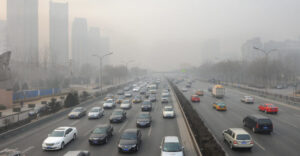All children are at risk, but the greatest burden falls on those socially and economically disadvantaged, the specialists asserted, while exemplifying the consequences of increased hot and extreme events.
According to researchers at Stanford University, air pollution exposure — both during development in the womb and after birth — raises the risk of medical issues for children. Some of these potential concerns include preterm birth and low birth weights, increased asthma issues, intellectual disabilities, mental health concerns like depression, and many others.
There are insecurity in developing countries due to food and water shortages, which have caused a sharp rise in malnutrition.
The risk of infections, such as salmonella, transmitted by water also increased, the scientists found.
The changing ecology of vectors that transmit diseases or even the air pollution impact one billion children around the globe.
Children are exposed to very high levels of air pollution, strongly linked to an increased risk of infant mortality, adverse birth outcomes, asthma and other respiratory diseases.
The experts stressed the need to act simultaneously on two fronts: to protect children from climate risks, adaptation, and to attack the underlying problem by reducing greenhouse gases and strengthening natural carbon sinks.
pll/acl/znc










